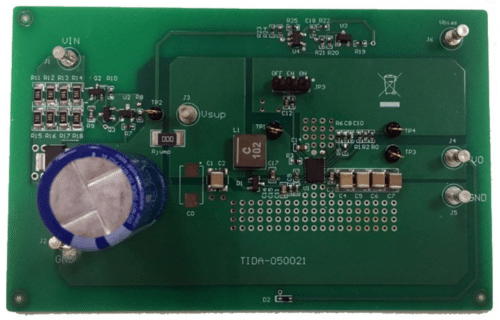The reference design features a boost converter, linear charger, and supercapacitor optimized for minimal space, ensuring reliable power in metering devices during outages.

Smart meters are gaining popularity worldwide, increasingly replacing traditional meters. This shift is driven by energy providers’ ability to remotely access meter readings, eliminating the need for physical visits to each household. A GSM-based wireless communication module is integrated within these meters, which usually operates on a 3.6-V to 4-V DC voltage derived from AC mains. When the AC mains experience a brownout, the GSM module must continue operating to report fault conditions and current electricity usage to a GSM receiver. Consequently, intelligent meters require a compact backup power solution to ensure the GSM module remains functional during such brownouts. The Texas Instruments (TI) reference design TIDA-050021 addresses these needs by including a high-current linear charger, a supercapacitor, and a high-efficiency boost converter, all optimized for space and performance.
It incorporates a simple charge-pump circuit, enabling the system to deliver 3.8-V, 2-A output power even when the supercapacitor’s voltage falls to 1 V. This design ensures optimal utilization of the energy stored in the supercapacitor. The design applies to various metering devices, including electricity, gas, and water meters.
The reference design boasts several key features, including a supercapacitor voltage range of 0.9 V to 2.7 V and a maximum output power of 3.8 V at 2 A, ensuring high efficiency. Its compact size is ideal for space-constrained applications, and it includes a high-current linear charger capable of approximately 0.8 A, enhancing its overall functionality and efficiency.
The block diagram of the design shows how a supercapacitor is employed as the energy storage unit. When AC mains power is available, the GSM module is powered by a 4-VDC voltage that results from AC/DC conversion.
Simultaneously, the supercapacitor is charged via a linear charger. In an AC mains brownout, the GSM module switches to a 3.8-VDC voltage produced by the TPS61088 boost converter, which draws power from the supercapacitor.
The reference design incorporates a simple charge-pump circuit to ensure the boost converter operates effectively even when the input voltage is very low. By integrating this circuit, the VIN pin voltage on the boost converter remains independent of the supercapacitor voltage, effectively doubling the output voltage. As a result, the boost converter maintains high efficiency even when the supercapacitor voltage falls below 1.5 V.
The boost converter requires a minimum input voltage of 2.7 V at the VIN pin, which serves as an independent power supply pin for the IC’s internal control circuit. However, the supercapacitor’s voltage range, which spans from 0.9 V to 2.7 V, is too low for optimal operation of the TPS61088. To address this, the design incorporates a charge-pump circuit that effectively doubles the VIN pin voltage relative to the output voltage, ensuring it significantly exceeds the minimum requirement.
TI has tested this reference design. It comes with a bill of materials (BOM), schematics, assembly drawing, printed circuit board (PCB) layout, and more. The company’s website has additional data about the reference design. To read more about this reference design, click here.








